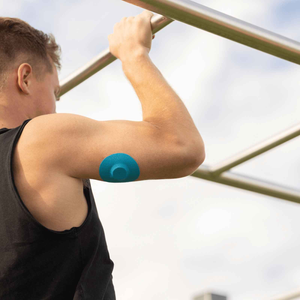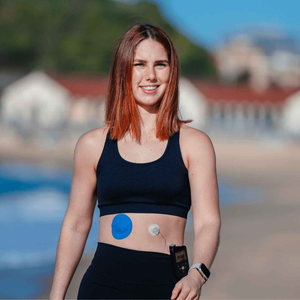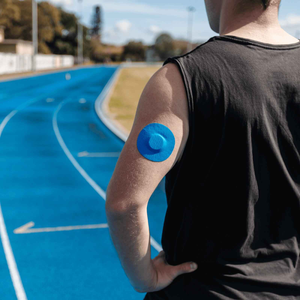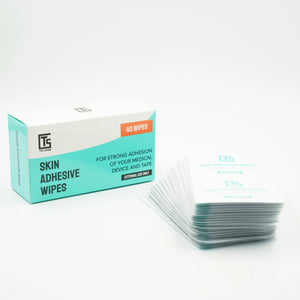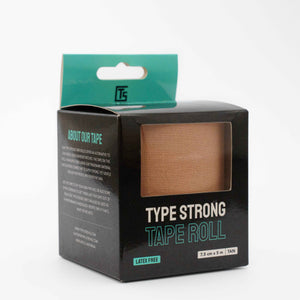I've been there - you peel off your CGM sensor after 10 days and there's this angry red mark that just won't go away. Sometimes it's itchy, sometimes it burns, and you start wondering if this is normal or if something's actually wrong.
The truth is, loads of people deal with CGM patch irritation. It's one of those things nobody really talks about until it happens to you. But here's what I've learned: catching the signs early makes all the difference between a minor annoyance and weeks of uncomfortable, irritated skin.
Whether you're rocking a Dexcom G7, Freestyle Libre, or any other CGM, knowing what's normal versus what needs attention can save you a lot of grief. Plus, you won't have to choose between healthy skin and keeping track of your glucose levels.
Medical Disclaimer: This article is for informational purposes only and is not intended as medical advice. Always consult with your healthcare provider, diabetes specialist, or dermatologist if you are experiencing skin reactions, irritation, or any other health concerns related to your CGM use. If you have signs of infection, severe allergic reactions, or persistent skin problems, seek professional medical attention promptly.
What's Actually Causing Your Skin to React?
Most of the time, it comes down to the adhesive. These patches need to stick to your skin for up to two weeks, so they use pretty strong stuff. "Contact dermatitis from medical adhesives affects approximately 15% of the general population" - National Center for Biotechnology Information. Those acrylate compounds they use? They can cause both irritant reactions and full-blown allergic responses.
But the adhesive isn't the only troublemaker:
- Moisture gets trapped underneath your patch and creates this perfect little environment for bacteria to party. Not fun for your skin.
- Friction happens - your clothes rub against the patch edges, you roll over on it in your sleep, you bump into things. All that rubbing adds up.
- Some people just have sensitive skin. If you've got eczema, psoriasis, or generally reactive skin, you're more likely to have problems.
- We get lazy with site rotation. Guilty as charged - it's easy to keep using the same spots because they're convenient.
Normal Skin Stuff vs. Time to Worry
Here's where people get confused. Some skin changes are totally normal, others are your body waving a red flag.
What's Usually Fine
- You might see slight redness right after you remove the patch. If it fades within a few hours, that's pretty typical. You'll probably have a circular outline where the patch was - again, normal.
- Mild itching on day one is common, and small bumps that disappear by the next day aren't usually cause for concern.
When Your Skin is Telling You Something's Wrong
- Redness that hangs around for more than 6 hours after removal? That's your skin saying it's not happy. Itching or burning that gets worse over time, especially if it spreads past where the patch was - that's moving into allergic reaction territory.
- You definitely need help if you see:
- Blistering or skin that's weeping
- Rash spreading beyond the patch area
- Signs of infection like warmth, pus, or red streaks
- Reactions that last over a week
Your diabetes team should know about ongoing skin issues. "Healthcare providers should work with patients to find suitable alternatives when adhesive reactions interfere with diabetes management" - Allergy UK. They can help you figure out alternatives so you're not stuck choosing between monitoring your glucose and having healthy skin.
What to Do When Things Go Wrong (If You're Having a Reaction Right Now)
- Take the patch off. I know it's annoying to lose sensor time, but if your skin is really reacting, don't wait. A severe allergic reaction isn't worth the money or data.
- Clean gently with lukewarm water and mild soap. Skip the alcohol wipes right now - they'll just irritate things more. Cool compresses help a lot. You can do 10-15 minutes a few times a day.
Pharmacy Products That Actually Helps
- Hydrocortisone cream works well for mild to moderate inflammation. Don't go overboard - thin layer, twice a day, and don't use it for more than a week without talking to someone.
- Antihistamines like Benadryl or Claritin can help with the itching, especially at night when it seems to get worse.
- Barrier creams with zinc oxide can protect your skin whilst it heals.

How to Prevent This Mess in the First Place
The best reaction is no reaction, right? Here's what actually works:
- Prep your skin properly. Clean with alcohol and let it completely dry - I mean completely. Oil and bacteria left on your skin make reactions more likely. For step-by-step application tips, check out our complete guide to applying and using the Freestyle Libre.
- Rotate your sites religiously. I know, I know - you have your favourite spots. But give each area at least 1-2 weeks to recover before going back.
- Think about barrier products. There are thin films designed specifically for medical adhesives that go between your skin and the patch.
- Control moisture. Use waterproof covers when swimming, then make sure everything dries completely afterward. Choose clothes made from natural fibres that breathe.
Solutions for Sensitive Skin
If you're dealing with regular irritation, Type Strong's hypoallergenic patches might be exactly what you need. They're designed with sensitive skin in mind, using medical-grade materials that are less likely to cause reactions.
Pro tips for patch application:
- Put them on at least 30 minutes before you shower or exercise
- Really smooth down those edges - lifting corners let moisture in
- Check daily for early warning signs
Patch testing with a dermatologist can identify exactly which ingredients you're reacting to. This is super helpful for choosing products that avoid your specific triggers.
Taking Care of Your Skin Long-Term
- Keep your skin healthy overall. Use fragrance-free moisturisers regularly. If you have underlying conditions like eczema, keep them well-managed.
- Document everything. Keep a simple diary noting when reactions happen, how severe they are, what products are used, even what the weather was like. Patterns emerge that you might not notice otherwise.
- Take photos of reactions, especially if you can't get to a doctor while they're active. It helps healthcare providers understand what you're dealing with.
- Nutrition matters too. Adequate protein helps your skin repair itself. Vitamin C supports collagen production. Zinc is important for wound healing. Basic stuff, but it adds up.

Your Next Steps
Look, CGM patch irritation is frustrating, but it doesn't have to derail your diabetes management. The key is being honest about what's happening with your skin and taking action early.
Start with these basics:
- Take a good look at your current skin condition
- If you're not rotating sites properly, start now
- Consider trying patches designed for sensitive skin
- Keep track of any reactions you have
For long-term success:
- Build a relationship with a dermatologist who understands adhesive reactions
- Invest in quality protective products that match your specific CGM
- Stay up to date on new adhesive technologies and treatment options
Your skin health isn't separate from your diabetes management - it's part of it. The Type Strong range of CGM protective patches offers tested solutions for people with sensitive skin. With the right preparation, products, and professional guidance when you need it, you can keep monitoring your glucose comfortably without sacrificing your skin health.
